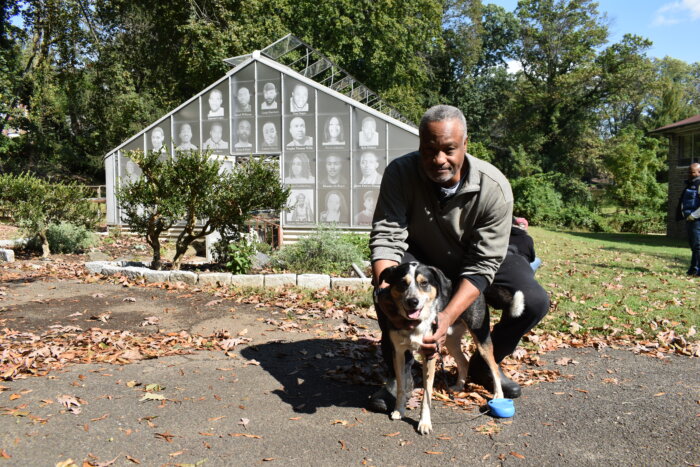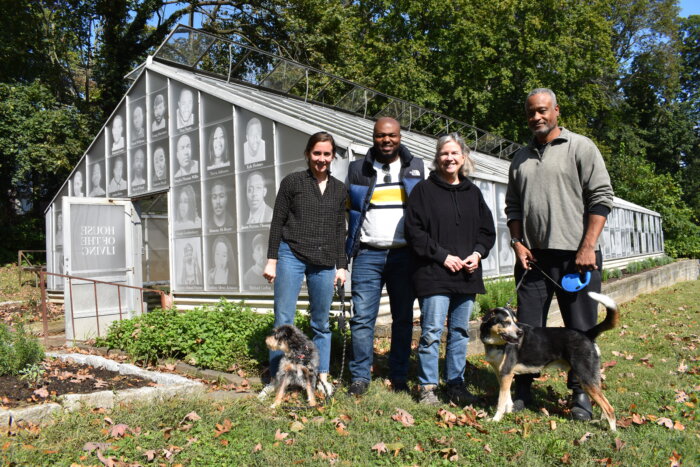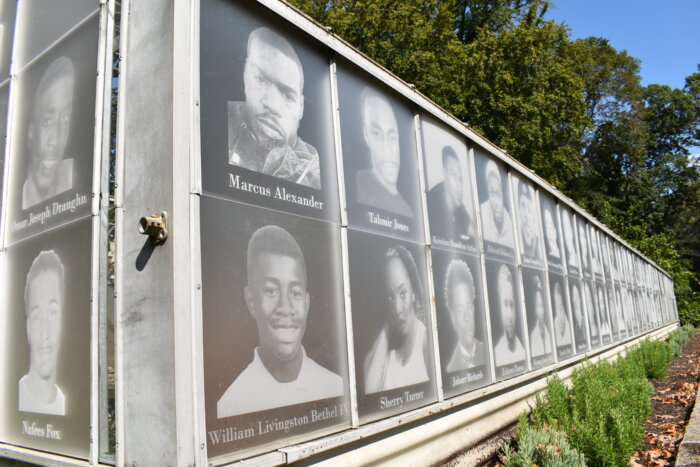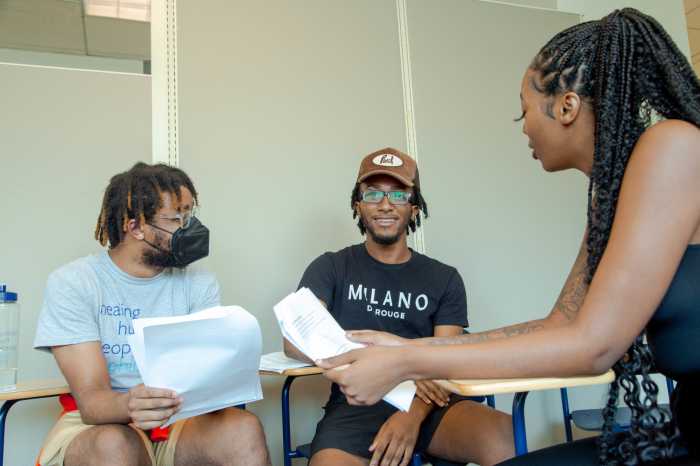When the sun shines, 90 acrylic panels – bearing the portraits and names of those killed in gun violence in the Philadelphia region – gleam on a greenhouse tucked into a former Gilded Age estate in Elkins Park.
House of the Living, a collaborative project between Swarthmore College, FarmerJawn and EMIR Healing Center, is set for a unveiling later this month, and organizers hope the greenhouse can become a serene place of healing and peace for families affected by homicide.
Their vision, with help of additional funding, includes installing more than 300 additional panels, overhauling the interior of the greenhouse and creating a space for workshops, performances and other programming.
Ron Tarver, a Swarthmore art professor, came across the greenhouse, which is located in the 43-acre Elkins Estate, while walking his dog, Winston. At the time, the structure was overgrown and had been abandoned for more than a decade.
“The thought just popped in my head,” said Tarver, who lives near the site. “I love that idea of light shining through these portraits that would provide sunshine and life to the plants inside.”

Some time later, he noticed Brandon Ritter, chief operating officer of FarmerJawn & Friends Foundation Fund, cleaning out the greenhouse, which sits near the former Tyler School of Art campus and is less than half a mile from the city line in West Oak Lane.
FarmerJawn uses a community-supported agriculture model to sell produce grown at a plot in Elkins Park and at a much larger farm near West Chester. Ritter is in charge of the company’s nonprofit arm.
Ritter was intrigued, and the pair teamed up with EMIR, which stands for Every Murder is Real, a nonprofit that supports family members of homicide victims. EMIR brought the idea to their clients, gauging their interest in the project and signing them up.
“I think the overwhelming response from the families has been super positive, and they feel very enlightened by this,” Tarver said. “They don’t feel that it’s as if you’re going to a cemetery or seeing your loved ones name on a T-shirt in front of a church.”
The project’s name is drawn from science fiction author Octavia E. Butler’s “Parable of the Sowers,” in which the protagonist develops a religion based on the “Books of the Living.”
Swarthmore art professor Jody Joyner enlisted students in two of her classes to fabricate the panels.
Using a laser cutter at the college, they etch the images into a plexiglass material. Each panel takes four to five hours to produce, and the glass needs to be redone if there is an equipment issue, Joyner said.
“Students have been integral to the project,” she said. “We would not have been able to get as far without their contributions.”

The collaborative began a little more than a year ago and, thanks in part to an $18,000 grant from Swarthmore’s Lang Center for Civic and Social Responsibility, is wrapping up its first phase.
House of the Living has started applying to grant programs and other funding sources to raise at least $300,000 for the next step in the project.
Right now, the greenhouse has “some limited, really limited growing capacity,” Ritter said.
Last year, a section of original glass panels was destroyed when a tree limb crashed into the building. Organizers of the collaborative believe the Dominican Sisters of St. Catherine de Ricci, which operated a retreat house on the Elkins Estate, built the 1,400-square-foot greenhouse in the 1960s.
FarmerJawn’s foundation hopes to boost the greenhouse’s capacity and distribute the harvested crops to marginalized families free of charge.
House of the Living also wants to install 320 more panels to cover the entire structure, bringing the total number of victims represented to 410. “That kind of approximates the amount of gun violence victims in the city yearly,” Tarver told Metro.
Among those currently honored are Nicolas Elizalde, the 14-year-old boy killed last year following a football scrimmage at Roxborough High School, and 8-year-old Fanta Bility, who was fatally shot two years ago by police in Delaware County.

There are no eligibility requirements for families wishing to participate, as long as they live in the Philadelphia area. Those interested should reach out to EMIR Community Coordinator Aja King at ajaking@emirphilly.org.
For more information about House of the Living, visit houseoftheliving.net.
Update (10/31): House of the Living last week launched a GoFundMe in an attempt to raise $25,000 for the installation of 100 more additional portraits.































